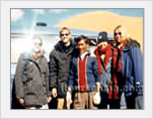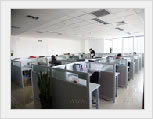
Beijing Hutong
- Travel to Beijing Hutong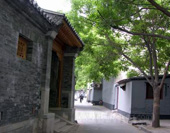 Beijing hutong and the courtyard are the real culture of old Beijing. Hutong refers to the typical narrow streets or alleys formed by lines of siheyuan, traditional courtyard residences. It is the winding Beijing hutongs other than the high-rise buildings and skyscrapers that are more attractive to those who travel here to fathom the real old Beijing and the local life. Hutongs first became common hundreds of years ago and has become the symbol of ancient Beijing. The word "Hutong" comes originally from Mongolian language, but has been adapted into the Chinese language. Hutong means "water wells" originally in Mongolian. Formed by lines of joint Siheyuan one to another, the traditional courtyard, hutong aslo refers to such neighbourhoods sometimes. There used to be thousands of hutongs, lanes, alleys and courtyards in Beijing, forming the residential areas for local
Beijing hutong and the courtyard are the real culture of old Beijing. Hutong refers to the typical narrow streets or alleys formed by lines of siheyuan, traditional courtyard residences. It is the winding Beijing hutongs other than the high-rise buildings and skyscrapers that are more attractive to those who travel here to fathom the real old Beijing and the local life. Hutongs first became common hundreds of years ago and has become the symbol of ancient Beijing. The word "Hutong" comes originally from Mongolian language, but has been adapted into the Chinese language. Hutong means "water wells" originally in Mongolian. Formed by lines of joint Siheyuan one to another, the traditional courtyard, hutong aslo refers to such neighbourhoods sometimes. There used to be thousands of hutongs, lanes, alleys and courtyards in Beijing, forming the residential areas for local
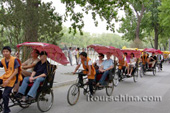 people. During the Ming and Qing Dynasties, emperors planned the Beijing city and arranged the living areas according to the social status; therefore in the past the Forbidden City was surrouned by numerous quatrangles, Siheyuan, and the traditional courtyards and hutongs. According to the records, there were over 1200 hutongs in the Ming Dynasty, which reached to 1800 in the Qing Dynasty then 1900 in the early Republican period. At its peak time, there were a maximum of more than 6000 hutongs in Beijing previously. The number of Beijing hutongs has dropped dramatically because they were demolished to give way for new roads and building due to the urban development and planning. But they still account for one third of the city space and.
people. During the Ming and Qing Dynasties, emperors planned the Beijing city and arranged the living areas according to the social status; therefore in the past the Forbidden City was surrouned by numerous quatrangles, Siheyuan, and the traditional courtyards and hutongs. According to the records, there were over 1200 hutongs in the Ming Dynasty, which reached to 1800 in the Qing Dynasty then 1900 in the early Republican period. At its peak time, there were a maximum of more than 6000 hutongs in Beijing previously. The number of Beijing hutongs has dropped dramatically because they were demolished to give way for new roads and building due to the urban development and planning. But they still account for one third of the city space and.
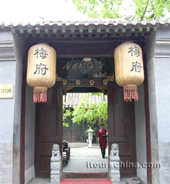 house roughly half of the population. The government now has realized the importance of Beijing hutong in the local culture and its charm and has designated lots of funds to help the locals to renovated and reenforced their courtyards. Nowadays there're 25 Beijing hutong preserving areas, which help to preserve the Beijing hutong and preventthe hutong culture vanishing in the history. You can stroll along the wide or narrow hutongs, or take a rickshaw hutong tour, and what's better is that you can visit the local families. The Forbidden City and the Summer Palace can show you the place where the Emperors and their families lived, but only the Hutong can let you know the life of the common people in Beijing. For this reason, the Hutong tours, by rickshaw, have become a popular site for the tourists. Here's some guide information of Beijing hutongs. Location: in the city of Beijing Tickets: free for visiting Opening hours: every day Contact number: +86 10 85968802
house roughly half of the population. The government now has realized the importance of Beijing hutong in the local culture and its charm and has designated lots of funds to help the locals to renovated and reenforced their courtyards. Nowadays there're 25 Beijing hutong preserving areas, which help to preserve the Beijing hutong and preventthe hutong culture vanishing in the history. You can stroll along the wide or narrow hutongs, or take a rickshaw hutong tour, and what's better is that you can visit the local families. The Forbidden City and the Summer Palace can show you the place where the Emperors and their families lived, but only the Hutong can let you know the life of the common people in Beijing. For this reason, the Hutong tours, by rickshaw, have become a popular site for the tourists. Here's some guide information of Beijing hutongs. Location: in the city of Beijing Tickets: free for visiting Opening hours: every day Contact number: +86 10 85968802
Beijing Hutong Tour
More Tours- 1-Day Beijing Hutong Culture Tour
 Code:BT07
Code:BT07 From:$25
From:$25
Trip Highlights: Attractions involved: Old Beijing Hutong Area, Drum Tower and Bell Tower, Shichahai Lake Area, and Prince Gong's Mansion. Our one day Hutong Culture Tour features an...
Your Question & Quick Answer*Design Your Own Trip
User Comments
Beijing Top Attractions
Beijing Travel Information
Our Service
Booking Procedures | Terms & Conditions | Payment Methods | Links | Site Map | About Us | Contact Us | Travel Agent
Copyright 2008, All rights reserved.. itourbeijing.com professional Beijing tour operator and China travel service
TEL: 86-10-85711972 (Universal) 1-888-288-9328 (North America) E-mail: contact@itourbeijng.com
Tours Index | China Tours | Beijing Tours | Xi'an Tours | Shanghai Tours | Guilin Tours | Tibet Tours
China Travel | Beijing Travel | Shanghai Travel | Xi'an Travel | Guilin Travel |The Great Wall Tours
China Golf | Beijing Golf | Shanghai Golf | Xiamen Golf | Beijing Map | Beijing Side Trip | Yangtze Cruise | Travel Picture
